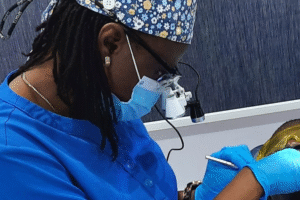Introduction
Hearing you have a cavity is never fun—but what if it could be reversed before it gets worse? While advanced tooth decay will require fillings or other dental treatment, early-stage cavities can actually be reversed. Yes, science shows there’s a window of opportunity where proper care, diet, and fluoride can stop—and even heal—the damage.
In this article, we explore what causes cavities, when they can be reversed, and the proactive steps you can take to keep your smile strong and healthy.
What Causes Dental Cavities?
Dental cavities, also called dental caries or tooth decay, occur when plaque—a sticky film of bacteria—feeds on sugars and starches in your mouth, producing acids that wear down tooth enamel. If not treated, this acid continues to erode the enamel, creating tiny holes in the tooth.
Stages of a Cavity:
- Demineralization: Loss of minerals in enamel—can be reversed.
- Enamel Decay: Formation of holes—requires treatment.
- Dentin Decay: Reaches deeper layers—more severe damage.
- Pulp Damage: May lead to infection or need for root canal.
Can Dental Cavities Be Reversed?
Yes—but only in the earliest stage, known as demineralization.
When enamel begins to lose minerals but hasn’t formed a full-blown cavity yet, you can help rebuild and remineralize the enamel. Once a cavity breaks through the enamel into the dentin, it can no longer heal on its own.
Signs You Might Be in the Reversible Stage
- White or chalky spots on your teeth
- Sensitivity to hot or cold
- No visible holes or dark spots yet
- Diagnosed with “incipient” decay during a dental check-up

How to Reverse Dental Cavities: What Science Recommends
1. Fluoride Treatments
Fluoride helps rebuild enamel and can reverse early decay. Use:
- Fluoride toothpaste (look for the ADA Seal)
- Fluoride mouth rinse
- Professional fluoride varnish from your dentist
2. Remineralizing Toothpaste
Toothpastes with calcium phosphate or hydroxyapatite can also aid in rebuilding enamel.
3. Dietary Changes
- Reduce sugar intake (especially sugary snacks and sodas)
- Eat more fiber-rich foods and calcium-rich foods like dairy
- Chew sugar-free gum with xylitol to boost saliva production
4. Better Brushing & Flossing Habits
Brush twice daily with a soft-bristle toothbrush and floss once a day to reduce plaque buildup and bacterial growth.
5. Use of Sealants
In some cases, dentists can apply sealants on pits and grooves of teeth to protect enamel from decay and support remineralization.
6. Increased Saliva Production
Saliva naturally helps remineralize enamel. Stay hydrated, avoid dry-mouth-causing habits, and chew sugar-free gum when necessary.
When It’s Too Late to Reverse a Cavity
Once enamel has been breached and bacteria enter the inner tooth, you’ll need professional intervention. Treatments may include:
- Fillings
- Inlays/Onlays
- Crowns
- Root canals, if the decay has reached the pulp
Why Early Detection Is Critical
Regular dental check-ups are key to catching cavities early, before irreversible damage occurs. That’s why we recommend visiting Klarity Dental at least every six months—especially if you’re prone to tooth decay.
Conclusion
While it’s not possible to reverse all cavities, science confirms that early-stage tooth decay is manageable—and even reversible—with proper care. By boosting your oral hygiene, improving your diet, and using fluoride, you can stop cavities in their tracks and protect your smile.
Don’t wait until it hurts—schedule a check-up today at Klarity Dental and take control of your dental health!







